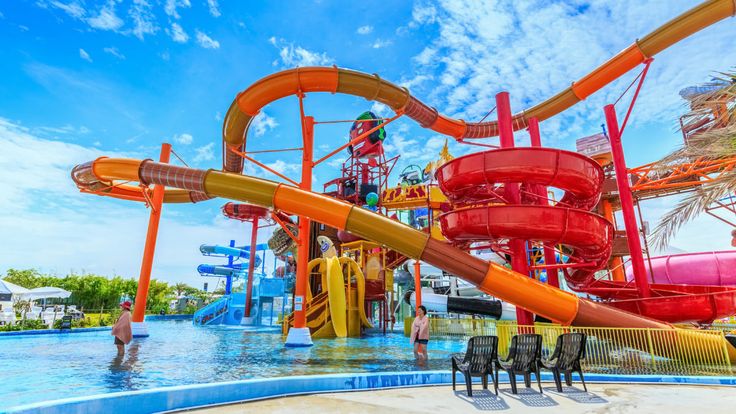If you previously thought water parks were exciting, prepare to be even more intrigued after reading this!
For families seeking a fun outing, a visit to a water park is sure to be enjoyable, whether basking in the summer sun or finding refuge in an indoor facility during the long winter months. However, while you wait in line to experience your favorite waterslide, have you ever considered the fascinating details surrounding you? For instance, who was the pioneer behind the first waterslide? How much water is needed to fill that wave pool? And where can you find the tallest waterslide in the world? We have uncovered the answers to these questions and more. Continue reading to impress your family (and fellow line-goers) with these captivating facts about water parks.
Water parks were not established until the 1970s.
The World Waterpark Association attributes the invention of the water park to American entrepreneur George Millay. Although he founded SeaWorld in San Diego in 1964, his venture into the realm of water parks that offered a unique experience did not occur until a decade later. In 1977, he launched the first Wet ‘n Wild water park in Orlando, Florida, marking the inception of an entirely new industry. Although Wet ‘n Wild officially closed in 2016, Millay’s legacy as the “father of water parks” endures.
Waterslides are grounded in scientific principles.
At first glance, water parks may seem purely entertaining, but similar to the design of roller coasters, they are heavily based on scientific principles—particularly physics and advanced engineering. Nowadays, computer software plays a crucial role in ensuring the safety of waterslide enthusiasts. These programs assess factors such as friction and mass for each slide, ensuring that riders are evenly spaced during turns and positioned optimally on each track. The continuous flow of water on those slides is also a matter of balancing friction, speed, and safety.
A water park typically requires around a million gallons of water.
Water is a valuable resource, so it may come as a surprise that it can take approximately 900,000 gallons to initially fill a water park.
Disney boasts the title of having the largest wave pool in North America. The wave pool at Disney’s Typhoon Lagoon, situated within the Walt Disney World Resort in Orlando, requires nearly 3 million gallons of water to reach full capacity. To put this into perspective, an Olympic-sized swimming pool holds approximately 660,000 gallons. Additionally, visitors can enjoy impressive 6-foot waves at the lagoon!
Water parks today are a culmination of innovative designs from around the globe. According to the World Waterpark Association, the water parks we cherish feature remarkable creations from various regions. For example, the first wave pool was developed in Europe, while the lazy river and speed slide originated in the Asia-Pacific area, and the inaugural waterslide was invented in New Zealand. Quite fascinating, isn’t it?
The excitement extends beyond just water parks. Some establishments, such as Great Wolf Lodge, Aquatopia, Timber Ridge, and Avalanche Bay, are part of larger family-oriented resorts that provide both indoor and outdoor activities. For those wishing to stay dry, many resorts offer thrilling ropes courses and zip line experiences high above the ground, as well as leisurely local tours. Other resorts feature in-house activities, including character meet-and-greets, arts and crafts, arcades, mini golf, and more. Great Wolf Lodge even presents an engaging interactive game called MagiQuest, where children can use magic wands to discover treasures, befriend treetop pixies, and confront a menacing dragon.

Tinggalkan Balasan